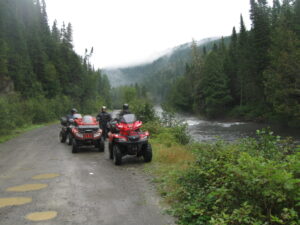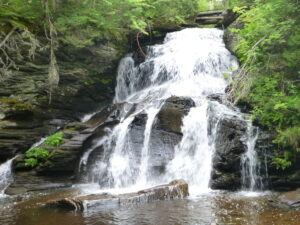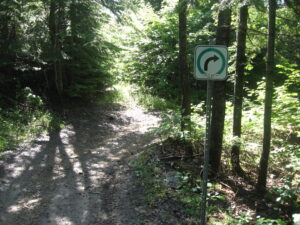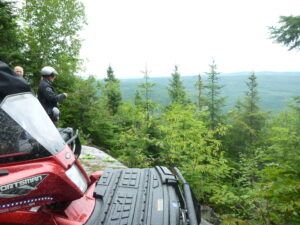Generally, repercussions on air quality related to exhaust fumes are centered mostly along the trails due to the frequent passage of quads, rather than outside the track. Taking in account local conditions (soil content, topography, winds), using a marked trail will minimize the impact on local residents and surrounding areas.
Using coarse material for the running surface decreases lifting of fine particles and therefore, exposition to particulate matter. Moreover, building trails on less rugged and clearer terrain cuts down on waiting time and idling while enabling a better dispersion of air contaminants.
A wrongful use of the trails such as speeding is likely to emit more air contaminants and to affect visibility. In this regard, trail development should plan for few and short straight lines, as well as proper signage (ex: trail entry, acceleration zone). While raising awareness should be a priority, it is also adamant strict measures are adopted to limit speeding, thus reducing air pollution.





